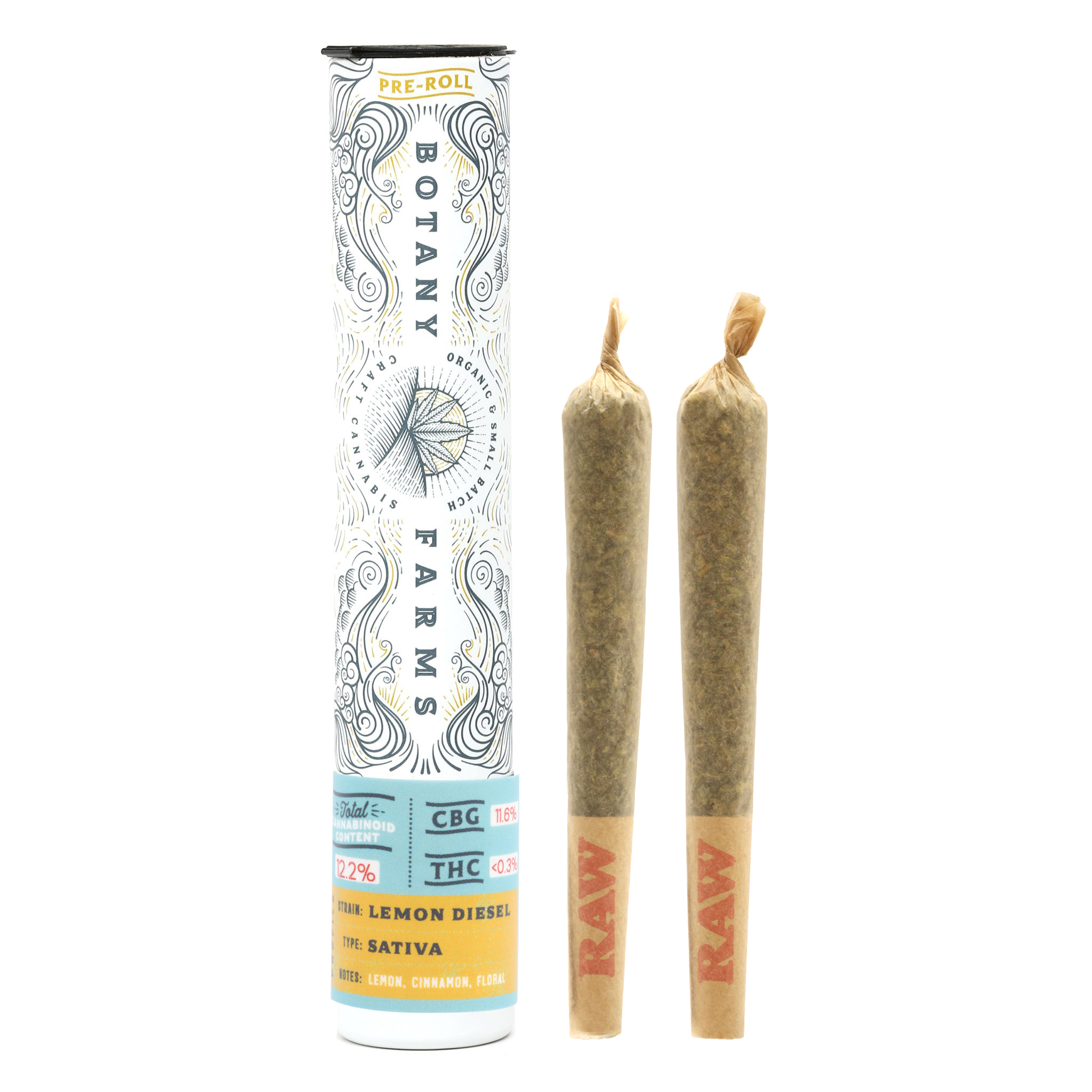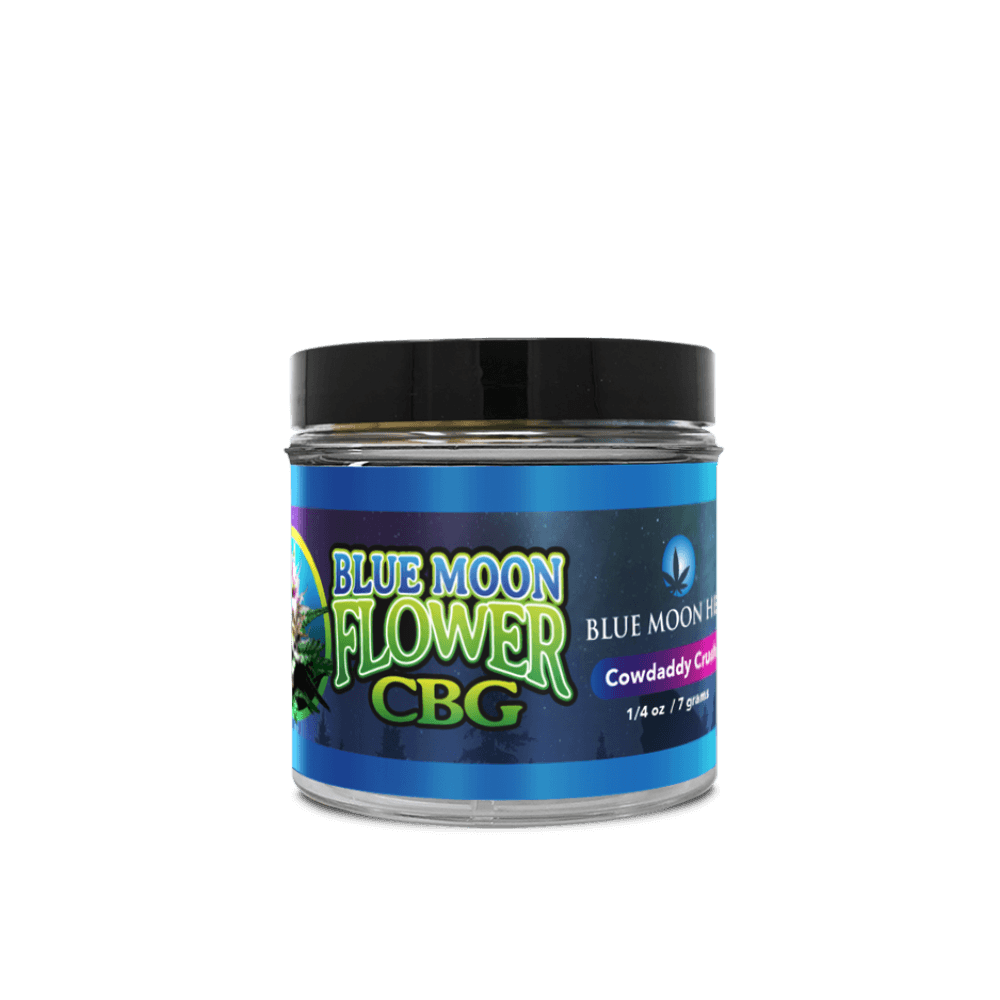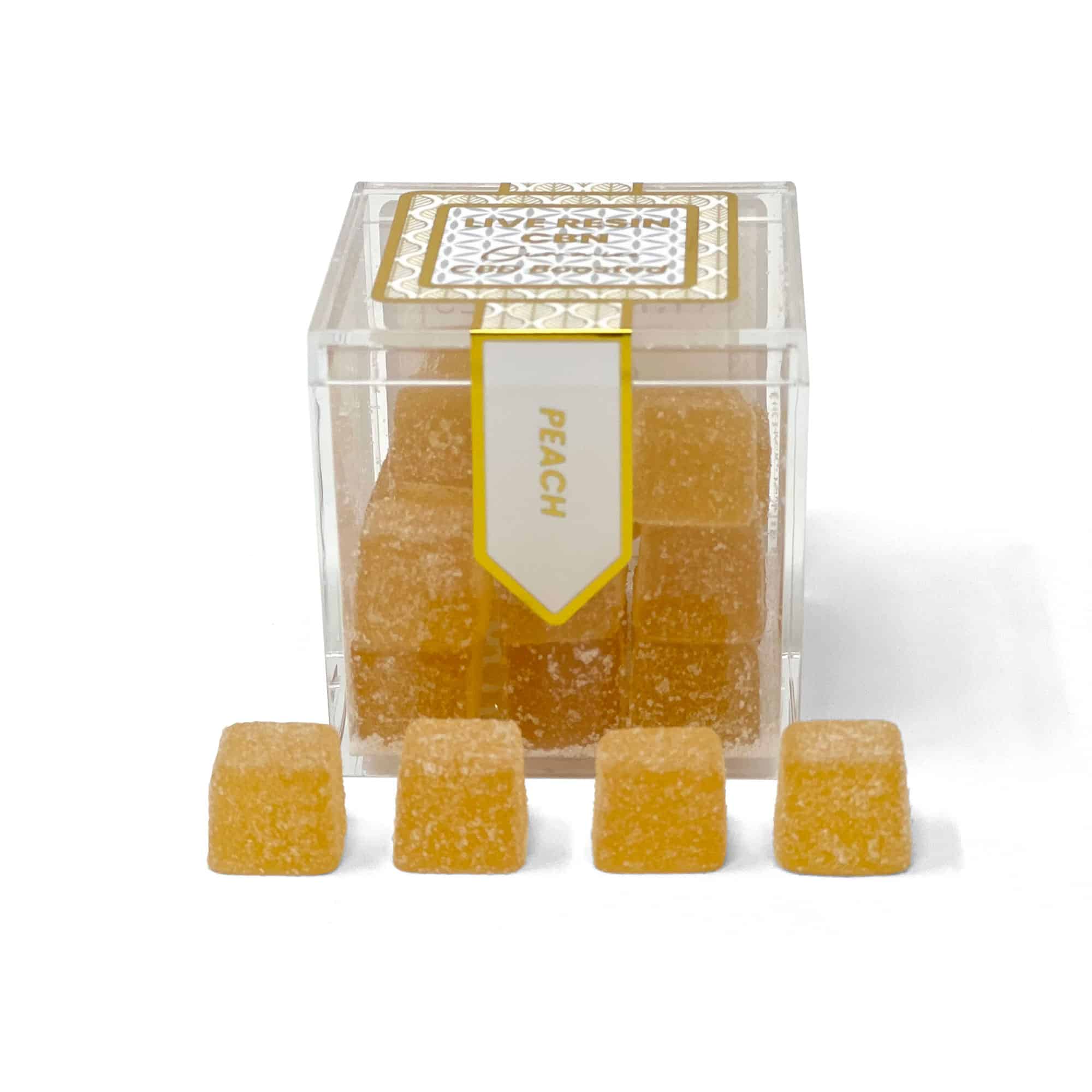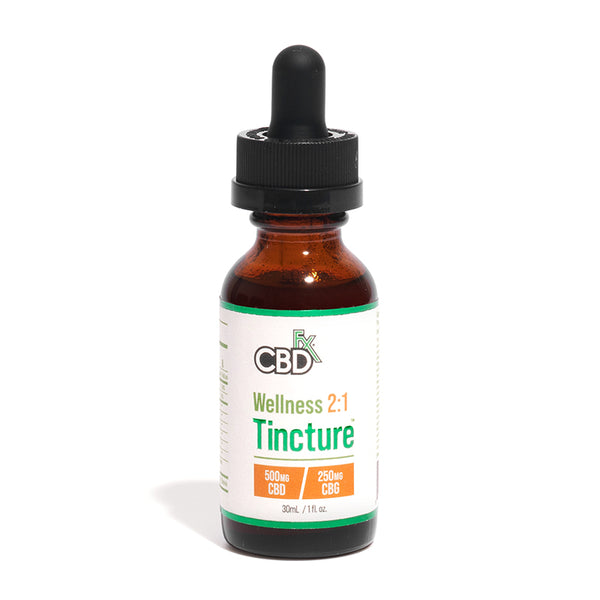AFFILIATE MARKETING
CBN vs CBG: two minor cannabinoids with tons of potential

Hearst Newspapers participates in various affiliate marketing programs, which means we may earn a commission when you purchase products featured in this content or purchase from vendors featured here. Our professional curators independently research and recommend products and services, with no newsroom involvement. Merchants can pay for a sponsored listing and may choose to rewrite their summary. When that happens, we label the listing as “Sponsored” and highlight it in grey to differentiate the merchant-provided content from our writing.
Cannabis has many names – Weed, Mary Jane, Pot, Herb, Reefer, or Ganja. The origins of these names may be obscure, but it is indisputable that cannabis is “a plant of a thousand compounds.”
Cannabis research started in the early 1940s before running into strong headwinds due to legal reasons. The enactment of the 2018 Farm Bill gave new life to cannabis research and efforts to position the crop favorably for economic exploitation.
Today, we are undoubtedly more knowledgeable about cannabis than in yesteryears. So we know that besides the two dominant cannabinoids, cannabidiol (CBD) and tetrahydrocannabinol (THC), cannabis also contains hundreds of other cannabinoids. And today, we’re discussing two of the most popular minor cannabinoids in the market.
In this article, we look at CBN vs CBG. We will explore how they work, their similarities and differences, potential benefits and side effects, legal status, and how to use them.
Key Takeaways
- CBN is a mildly psychoactive cannabinoid best known for its sleep-promoting properties.
- CBG is a mostly nonpsychoactive cannabinoid with wide-ranging potential health benefits for eye health and inflammatory conditions.
- CBN is made from oxidized THC, while CBG is made when CBGa decarboxylates.
- Research on these two cannabinoids is by no means complete, and a lot of gray areas exist that still need more work.
What is CBN?
CBN is a cannabinoid formed when THC oxidizes in the presence of light and air. For this reason, it is predominantly found in aged cannabis material. Despite being lesser known than CBD and THC, CBN is actually the first cannabinoid to be identified and isolated from cannabis.
Since CBN is derived from THC, assuming that it’s psychoactive is a very accurate assumption. Indeed, this cannabinoid exhibits one-fourth of the potency of THC at both the CB1 and CB2 receptors within the endocannabinoid system. As such, it is weakly psychoactive. The exact effects may vary depending on your tolerance to psychoactive products, but most people will find CBN mildly intoxicating.
Due to its ability to interact with the CB receptors, CBN is thought to have therapeutic benefits, which we shall get into much later. As a minor cannabinoid, CBN exists in very low concentrations, between 0.1 and 1.6%. So, it is mostly artificially synthesized for commercialization.
Blue Moon Hemp’s Cowdaddy Crush CBG FlowerHave you been enjoying the benefits ofCBDhemp flower and are thinking of trying something rich in CBG?Or maybe you’ve considered addingsmokeable hemp flower to your wellness routine but aren’t sure where to start?
What is CBG?
CBG is another minor cannabinoid that has recently attracted significant scientific interest. It is formed through the decarboxylation of Cannabigerolic Acid (CBGa) and is predominantly found in young cannabis plants. Unlike CBN, CBG is mostly non-psychotropic because it binds weakly to the CB1 and CB2 receptors.
CBG is the precursor of CBD and THC in its acid form, which is why it is called “the mother of all cannabinoids.” CBG typically exists in very low levels in most cannabis strains, but there are a number of high CBG strains such as White.
How Do CBN and CBG Work?
All cannabinoids exert their effects via the endocannabinoid system (ECS). The ECS is a vast network of endogenous cannabinoids (“endocannabinoids”) receptors and enzymes that work together primarily to maintain body homeostasis. Of course, there are many other functions the ECS regulates, but the major ones are:
- Emotion processing
- Sleep
- Pain control
- Immune system function and inflammatory responses
- Learning and memory
- Reproduction
So, a few years back, scientists discovered that our bodies produce cannabinoid-like molecules that regulate the ECS. These molecules are many, but the two most studied are anandamide and 2-Arachidonoylglycerol.
AEA and 2-AG are also the main endogenous molecules of the ECS. They bind to the CB1 and CB2 receptors triggering wide-ranging physiologic and behavioral responses that benefit the body.
For example, anandamide preferably binds to the CB1 receptor causing feelings of happiness, satisfaction, and contentment. This is why it is also called the “bliss molecule.” Interestingly, THC’s binding action to the CB1 receptor produces more or less similar effects, i.e., euphoria, relaxation, etc. As a result, anandamide is considered an analog of THC.
CBN and CBG work in a similar fashion – they interact with preferred CB receptors, stimulating pharmacological effects unique to them. For example, CBG has a low affinity for the CB1 and CB2 receptor but behaves like a CB1 antagonist. As such, it may neutralize the psychoactive effects of THC.
On the other hand, CBN shows a high binding affinity for CB1 receptors but a partial preference for CB2 receptors. Despite its strong affinity for CB1 receptors, CBN is weakly psychotropic, so its psychoactive effects are not as strong as THC’s.
Do CBN and CBG Get You High?
The notion that any compound of cannabis is potentially psychotropic is misguided. Cannabis produces two types of cannabinoids – psychoactive and non-psychoactive.
The main psychoactive ingredient of cannabis is THC, which can be quite high content-wise in landrace strains. However, in hemp—the legal cannabis—THC typically appears in very low concentrations of not more than 0.3%. This is, of course, as per the requirements of the 2018 Farm Bill.
CBN is mildly psychoactive, probably due to its close relationship with THC. Even then, its potency is quite low (~25% of THC), so it is unlikely to induce much of a high. Look at it this way; the standard THC dose that produces noticeable psychotropic effects (a “high”) is 5 milligrams for experienced and naïve users. Of course, frequent users develop tolerance and could need more.
If CBN’s potency is ~25% of THC, you would need roughly 20 milligrams to get high. Keep in mind that these rare cannabinoids are more expensive to manufacture so that much CBN would certainly put a dent in your wallet.
Unlike CBN, CBG is 100% non-psychotropic for most people, so any chances of getting high on it are practically zero.
How to Take CBN and CBG
How you take CBN and CBG and, indeed, other cannabinoids is a matter of personal preference. Let’s highlight the main ways to take CBN and CBG.
Smoking
Since time immemorial, smoking has been one of the most common methods for taking cannabinoids. And it is easy to see why – all you had to do was to grind the flowers and leaves, roll them in a joint, light it up, and voila!
In traditional medical systems, passive inhalation was also used. Whether for rituals or healing, people would be subjected to the smoke and fumes of burning cannabis. Today, smoking cannabis is a more elaborate affair with specially designed pipes and bongs made particularly for the activity. Both accessories have merits and demerits but have certainly made smoking cannabinoids a lot easier.
Inhalation
Vape carts and pens are considered safer and more hygienic than the good old joints and blunts. These tools eliminate the smoke aspect because instead of combusting, they vaporize the cannabis material. The vapor is then inhaled.
Unlike joints and blunts, vape carts are specifically designed for cannabis oils. These can be infused with a particular cannabinoid(s), allowing you to experience their genuine effects. With joints, blunts, pipes, and bongs, you cannot tell how the cannabinoids affect you even if you are doing CBN/CBG-rich cannabis flower.
Edibles
Edibles are primarily stuff like gummies, baked goods, tablets, pills, and homemade treats like cookies, smoothies, and brownies. As the name suggests, these cannabis-infused foods are taken orally.
You can take CBN and CBG by adding concentrates/isolates to your regular recipe of cookies, brownies, or smoothies. Commercial edibles like gummies, pills, and tablets can also be infused with these cannabinoids before being sold to consumers.
However, you should know that the oral bioavailability of cannabinoids is quite low. CBD, for instance, has an oral bioavailability of roughly 13-19%. This is due to the first-pass mechanism, which reduces the cannabinoid load that enters your systemic circulation. So, if you eat a gummy with 25mg of CBD, for example, just about 3.25mg to 4.75mg gets into your bloodstream.
This is why if you are using cannabinoids for therapeutic reasons, you need to take them consistently for some time (2 weeks to a month) to feel the effects. The reason is that they need to build up in your system to sufficient amounts to stimulate their therapeutic benefits.
Topicals
Cannabinoids are increasingly being added to skincare and cosmetic products. This is because the body can absorb certain substances through the skin. So adding CBG and CBN to skincare products certainly makes sense due to their array of potential benefits, including anti-inflammatory, analgesic, and antibiotic properties.
One downside of cannabinoid topicals is that they don’t penetrate the skin deeply enough. Fortunately, this can be resolved by adding penetration enhancers and ‘warm’ Chinese herbs. You can also wash and clean the affected area before applying CBN/CBG cream or lotion to enhance skin penetration.
Alternatively, you can use a warm towel to clean the surface of the affected place. The warmth unclogs the pores, making it easier for the ingredients to pass into the bloodstream. Topicals are fairly fast-acting, especially for injuries and skin conditions.
What Are the Similarities Between CBN and CBG?
CBN and CBG are naturally occurring cannabinoids derived from cannabis. So, expectedly, they share some similarities, such as:
- Both cannabinoids exert their effects by interacting with your endocannabinoid system.
- CBN is slightly psychotropic, while CBG is mostly non-psychotropic. However, CBN is unlikely to induce a “high” due to its low potency. In effect, both cannabinoids do not cause a “high” for most people.
- Both CBN and CBG are considered minor cannabinoids because they naturally occur in trace amounts. So, for commercial purposes, both cannabinoids are synthesized artificially.
- Both cannabinoids exhibit considerable anti-inflammatory and analgesic properties.
- CBG and CBN are federally legal in the United States thanks to the 2018 Farm Bill.
What’s the Difference between CBG and CBN?
Even though CBN and CBG share some qualities, they are also different. Here is how:
- CBN and CBG have different molecular structures. CBN’s structure closely resembles THC’s, while CBG’s molecular structure is similar to CBD and CBC.
- Both cannabinoids interact with the CB1 and CB2 receptors to produce different physiologic effects. As a result, CBN is touted for its potential pain-killing, anti-inflammatory, and appetite-stimulating effects, while CBG may offer therapeutic effects for anxiety and glaucoma.
- It is also worth noting that CBG and CBN originate from different precursor compounds. CBG comes from CBGa, while CBN results from oxidized THC.
- CBG, like CBD, can mitigate the psychoactive effects of THC, while CBN does not exhibit this property.
CBG vs CBN Potential Benefits
The whole idea behind cannabis research is to identify how these unique plant compounds can benefit us. So far, research has established the following:
CBN Potential Benefits
- CBN demonstrates anticonvulsant activity in mice but not as potently as CBD and Delta 9-THC.
- Like Delta 9-THC, CBN can potentially stimulate appetite.
- Due to its soothing effect, CBN is widely regarded as a sleep enhancer.
- CBN possesses significant potential anti-inflammatory and antibiotic activity. Consequently, it is proposed as a potential ingredient for topical applications for treating psoriasis.
- Other studies suggest CBN may be instrumental in promoting bone formation.
- CBN may also potentially impact intestinal motility and platelet aggregation and may help with internal bowel disease (IBD).
CBG Potential Benefits
- CBG is scientifically noted for its potential ability to reduce intraocular pressure. As such, it may help boost eye health by treating glaucoma.
- CBG exhibits potent anti-inflammatory properties and is touted as a potential candidate for developing novel drugs to prevent/control/treat conditions involving pathological inflammatory responses.
- Its antioxidant property makes it a potential curative agent for inflammatory diseases like IBD.
- Older studies suggest that CBG could possess muscle relaxant properties.
- Other studies indicate CBG could have stronger analgesic and anti-erythemic effects than THC.
- CBG’s ability to antagonize 5-HT1A receptor agonists suggests it may have an antidepressant effect.
Check out our blog for other things CBG is potentially good at.
CBG vs CBN Potential Side Effects
While the potential benefits of CBN and CBG are noteworthy, keep in mind that we do not know everything about these compounds. For example, barring CBD and THC, the toxicology profiles of other cannabinoids are pretty much gray areas.
Mostly, their potentially harmful side effects are determined by their similarity to either CBD or THC. For instance, CBG is structurally similar to CBD, so it is more likely to display CBD’s side effects.
The same principle applies to CBN. It is structurally similar to THC, so we contend that its side effects would closely mirror THC’s. However, CBN is only mildly psychoactive, and we do not expect it to produce the intense psychomimetic effects we associate with THC.
CBN vs CBG: Which One Is Better?
We try to dissuade cannabis users from looking at cannabinoids through the “which is better” lens. In truth, no cannabinoid is better than the other. They both have different pharmacological profiles and produce different therapeutic benefits.
One cannabinoid might improve one aspect of health better than another. For instance, if you are a poor eater looking for some boost in appetite, CBN is a practical choice compared to CBG. However, CBG would be the logical choice if you want potential help with glaucoma.
Sometimes, they share qualities, meaning combining them would enhance their collective potency. For example, both cannabinoids exhibit anti-inflammatory properties, so mixing them would boost their overall effect. Indeed, the key to getting the most out of cannabinoids is taking them together.
The idea of cannabinoids working better together than alone is theorized in the “entourage effect.” Taking CBN and CBG together is certainly one way of experiencing their collective health benefits.
Can You Take CBG and CBN Together?
Yes, you can definitely take CBG and CBN together. As we have just discussed, doing so enhances their synergy, thus helping you get the most out of cannabinoids.
Fortunately, most hemp products tend to contain more than a single cannabinoid. Moreover, it has been shown that certain cannabinoids work extremely well together. For example, the excellent synergy between THC and CBD has seen them be used frequently within the cannabis ecosystem.
What Is the Legal Status of CBG and CBN?
The 2018 Farm Bill legalized hemp with a THC concentration of not more than 0.3%. This effectively made hemp-derived compounds and derivatives legal. As such, hemp-derived CBN and CBG are federally legal in the United States.
Where to Buy CBN and CBG Products Online
So, all factors considered, you may be thinking of trying CBN and CBG. Lucky for you, we have a list of some of the best products out there containing CBG and CBN. Let’s quickly go over them.
First up is this Full Spectrum CBG Oil, from Fab CBG, which contains CBG and CBD in a 1:1 ratio to ensure you enjoy the best of both worlds. With 2400 mg of CBG and CBD, we proudly inform you that this CBG oil is one of the most potent cannabinoid products on the market. It comes in three delicious flavors—citrus, natural, and mint—to enhance your enjoyment.
For lovers of edibles, these Live Resin CBN Gummies from Tribe Tokes with 20 mg of CBN and 10 mg of CBD are just what you need to help you fall asleep fast and stay sleeping longer. These gummies strike the right balance of chewy and soft with added terpenes for an authentic cannabis experience.
We also have this CBDFx CBD + CBG Oil, which, as the name suggests, combines CBG and CBD with terpenes, curcumin, and Coenzyme 10. The result is a tincture that provides a one-of-a-kind experience. It is available in four strength levels—500 mg, 1000 mg, 2000 mg, and 4000 mg—to ensure no one is left out.
You can also try the NuLeaf Extract CBN Oil to experience the synergy of cannabinoids. This product comes in three strength levels—300 mg, 900 mg, and 1800 mg. Whether your overall goal is better quality sleep or pain relief, this well-formulated CBN oil certainly does the trick.
Conclusion — CBN vs CBG
CBN and CBG are just two of the many cannabinoids found in cannabis. Although not much is known about them, existing studies suggest that they may have properties that could be beneficial.
However, it should be noted that much of what is known about CBN and CBG comes from animal studies. It is unclear if such findings can be replicated in human subjects, which is the benchmark for validation.
Nonetheless, cannabis as a plant has been used for millennia, and all historical and contemporary evidence suggests it potentially possesses significant health benefits. But, we still have much more to learn here.
Hearst Newspapers participates in various affiliate marketing programs, which means we may earn a commission when you click links in this content. Our professional curators independently research and recommend products and services, with no newsroom involvement. Merchants can pay for a sponsored listing and may choose to rewrite their summary. When that happens, we label the listing as “Sponsored” and highlight it in grey to differentiate the merchant-provided content from our writing.
AFFILIATE MARKETING
Samsung: 6-Day Workweek For Execs, Company in Emergency Mode

Four-day workweeks might have all the buzz, but one major tech company is going in the opposite direction.
Samsung is implementing a six-day workweek for all executives after some of the firm’s core businesses delivered lower-than-expected financial results last year.
A Samsung Group executive told a Korean news outlet that “considering that performance of our major units, including Samsung Electronics Co., fell short of expectations in 2023, we are introducing the six-day work week for executives to inject a sense of crisis and make all-out efforts to overcome this crisis.”
Lower performance combined with other economic uncertainties like high borrowing costs have pushed the South Korean company to enter “emergency mode,” per The Korea Economic Daily.
Related: Apple Is No Longer the Top Phonemaker in the World as AI Pressure and Competition Intensifies
Executives at all Samsung Group divisions will be affected, including those in sales and manufacturing, according to the report.
Samsung had its worst financial year in over a decade in 2023, with the Wall Street Journal reporting that net profit fell 73% in Q4. It also lost its top spot on the global smartphone market to Apple in the same quarter, though it reclaimed it this year.
Though employees below the executive level aren’t yet mandated to clock in on weekends, some might follow the unwritten example of their bosses. After all, The Korea Economic Daily reports that executives across some Samsung divisions have been voluntarily working six days a week since January, before the company decided to implement the six-day workweek policy.
Entrepreneur has reached out to Samsung’s U.S. newsroom to ask if this news includes executives situated globally, including in the U.S., or if it only affects employees in Korea. Samsung did not immediately respond.
Research on the relationship between hours worked and output shows that working more does not necessarily increase productivity.
A Stanford project, for example, found that overwork leads to decreased total output. Average productivity decreases due to stress, sleep deprivation, and other factors “to the extent that the additional hours [worked] provide no benefit (and, in fact, are detrimental),” the study said.
Related: Samsung’s Newest Galaxy Gadget Aims ‘To See How Productive You Can Be’
Longer hours can also mean long-term health effects. The World Health Organization found that working more than 55 hours a week decreases life expectancy and increases the risk of stroke by 35%.
The same 55-hour workweek leads to a 17% higher risk of heart disease, per the same study.
AFFILIATE MARKETING
John Deere Hiring CTO ‘Chief Tractor Officer,’ TikTok Creator

This article originally appeared on Business Insider.
Agriculture equipment company John Deere is on the hunt for a different kind of CTO.
The brand on Tuesday announced a two-week search to find a “Chief Tractor Officer” who would create social media content to reach younger consumers.
One winning applicant will receive up to $192,300 to traverse the country over the next several months showcasing the way John Deere products are used by workers, from Yellowstone National Park to Chicago’s Wrigley Field and beyond.
“No matter what you do — whether it’s your coffee, getting dressed in the morning, driving to work, the building you go into — it’s all been touched by a construction worker, a farmer, or a lawn care maintenance group,” Jen Hartmann, John Deere’s global director of strategic public relations, told AdAge.
To kick off the search, John Deere tapped NFL quarterback Brock Purdy (who will presumably be a bit busy this Fall to take the job himself) to star in a clip in which he attempts to set out on a road trip in an industrial tractor.
Suited up in the obligatory vest, work boots, and John Deere hat, Purdy’s progress is interrupted by teammate Colton McKivitz hopping into the cab while a string of messages floods in from other athletes and influencers expressing interest in the job.
The clip also represents the first time that the 187-year-old company has used celebrities to promote itself, Hartmann told AdAge.
According to the contest rules, entrants have until April 29 at midnight to submit a single 60-second video making their pitch for why they should be the face and voice of the company.
In addition, entrants must live in the 48 contiguous states or DC — sorry Hawaii and Alaska residents. Interestingly, any AI-generated submissions are prohibited, too.
Videos will be judged against four categories — originally, creativity, quality, and brand knowledge — after which five finalists will be chosen and notified after May 17.
AFFILIATE MARKETING
How to Capitalize On This Thriving Talent Pool to Drive Your Company’s Growth

Opinions expressed by Entrepreneur contributors are their own.
As business operations shift, executives and entrepreneurs are increasingly turning to an on-demand workforce that is simultaneously empowered by technology and drawn to purpose-driven projects.
Consider Upwork, whose 2020 Future of Workforce Pulse Report revealed that nearly 80% of hiring managers engaging freelancers feel confident about doing so. These hires provide coveted expertise — on a project-to-project basis — that entrepreneurs need to scale their operations without incurring long-term overhead costs.
This new market paradigm also promotes dynamism, with 79% of businesses agreeing that freelance talent enables greater innovativeness. Perhaps most telling, 84% of hiring managers utilizing it feel more assured about adapting to future disruption, compared to just 69% of those relying solely on full-time staff.
By capitalizing on freelance marketplaces, entrepreneurs can amplify employer branding, augment capabilities and future-proof organizations, even amid turbulence. As nearly 60% of hiring managers plan to increase engagement with freelancers over the next two years, the time is now for executives to realize their inherent potential.
Related: Navigating the Great Reshuffle: Why Your Employer Brand is Key in Recruiting Talent
The job market continues to shift
After a season of massive hiring, we’re back to seeing layoffs and downsizing. Companies are feeling the bloat—from unused office spaces with rising rent to oversized employee structures — and are shifting focus to hiring only the most essential positions. This leaves a critical talent gap needed for complex projects and specialized tasks. Highly skilled and specialized independents can fill this void.
A few key benefits to engaging them:
• Access to niche experts: Platforms like Toptal and Guru provide access to elite professionals from leading Fortune 500 companies and innovative startups. Whether the need is for a machine learning specialist, growth strategist or financial modeler, entrepreneurs can now curate on-demand teams that boast specialized skillsets, enabling them to focus investment on projects with the highest strategic value.
• Enhanced agility: Leading corporations increasingly “rent” skills by tapping freelance experts for initiatives involving new technologies or while entering unfamiliar markets. With niche contributors available to plug knowledge gaps, owners can explore ideas that once seemed unrealistic due to internal constraints—unlocking inventiveness and first-mover advantage.
• Stronger employment brand: Blending full-time employees with project-based freelancers signals a commitment to modernization and work-life balance. Offering both engaging work and flexibility will help draw exceptional candidates and help you compete with corporate giants for top-tier talent.
Related: Can Retirees Thrive in the Gig Economy? Navigating a Changed Workforce
Tips for capitalizing on gig talent
Having explored the forces reshaping work, executives may wonder how to effectively leverage freelance platforms. After all, how can you know you’re getting your money’s worth if a hire isn’t physically present full-time?
• Define projects clearly: Contract hires thrive when expectations and deadlines are established upfront. So, clearly, detail needs around deliverables, success metrics, required skills and projected time investments. Staying ahead when it comes to communication and expectations will help avoid headaches, including delays.
• Build loyalty with talent: The best independent professionals have options regarding the projects they accept. Study their profiles to discern passions and incentives. Offer interesting work, flexibility and strong communication to motivate interest and improve results.
• Manage collaboration: Provide steady context, feedback and guidance at each project stage, but also foster autonomy, even while directing efforts toward strategic goals. A dynamic balance of these qualities drives optimal outcomes.
• Continue expanding your talent pool: Add proven freelancers to an internal database for repeat engagements, and notify talent about new initiatives for which their expertise would provide an edge. Uncovering additional ways, freelancers can enhance the business deepens the relationship.
Related: Fill Your Talent Gap by Sourcing Candidates From the Veteran Community
Top platforms for connecting with talent
Now comes the hard part: finding contractors who bring fractional expertise sets. There are a growing number of platforms, of course, but I’ve found that the following stand out as leaders:
Fiverr: Ideal for execs seeking design, digital marketing, writing, video and admin support. Known for affordability and ease of posting jobs. It taps a global talent pool, too.
Upwork: A flexible platform that spans more than 150 skills. Used by everyone from small businesses to global enterprises. Strong at IT, development, design, finance and consulting.
Toptal: Focuses exclusively on the top 3% of talent. Best for expert software developers, designers, project managers and finance experts. All contributors are extensively vetted.
Contra: A growing independent platform that vets and connects both job candidates and hiring companies. Best of all, it doesn’t take a commission from projects.
Related: 3 Strategies to Optimize Your Hiring Process and Find the Best Employees
The numbers speak for themselves: businesses engaging freelance professionals report greater confidence and competitiveness, as well as the ability to withstand turbulence, yet legacy beliefs can still cause hesitancy among those keen to hire. Supported by such specialized collaborators, companies can explore new horizons unencumbered by a one-time narrow view of staffing models.
-

 SEO7 days ago
SEO7 days agoGoogle Limits News Links In California Over Proposed ‘Link Tax’ Law
-

 SEARCHENGINES6 days ago
SEARCHENGINES6 days agoGoogle Core Update Volatility, Helpful Content Update Gone, Dangerous Google Search Results & Google Ads Confusion
-
SEARCHENGINES7 days ago
Daily Search Forum Recap: April 12, 2024
-

 SEO6 days ago
SEO6 days ago10 Paid Search & PPC Planning Best Practices
-

 MARKETING6 days ago
MARKETING6 days ago2 Ways to Take Back the Power in Your Business: Part 2
-

 MARKETING4 days ago
MARKETING4 days ago5 Psychological Tactics to Write Better Emails
-

 SEARCHENGINES5 days ago
SEARCHENGINES5 days agoWeekend Google Core Ranking Volatility
-

 PPC6 days ago
PPC6 days agoCritical Display Error in Brand Safety Metrics On Twitter/X Corrected






















